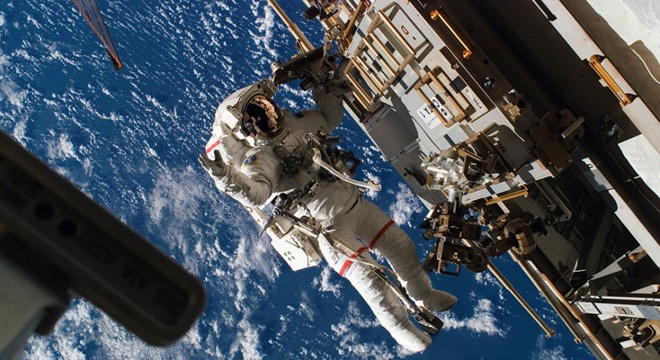“Frequent travel may be required.”
That statement might seem innocuous enough on its own, but when paired with the myriad other qualifications posted on a new online job posting, it becomes clear that this isn’t just another run-of-the-mill position.
And yet, NASA on Tuesday followed numerous other employers these days in posting an open call for new astronaut candidates online, at the government job-finding website USAJobs.
It’s not the first time NASA has posted an astronaut job application online (that was actually in 2009), but with nearly 70 percent of Americans logging online to look for job information in the wake of the 2008 recession, perhaps NASA’s online job app will attract even more interest this time around.
“For 50 years, American astronauts have led the exploration of our solar system,” NASA Administrator Charles Bolden said in a press release on Tuesday. “Today we are getting a glimpse of why that will remain true for the next half-century. Make no mistake about it, human space flight is alive and well at NASA.”
The job pays between $64,724.00 to $141,715.00 per year depending on experience, and candidates are allowed to apply from November 15 through January 27, 2012. NASA will then begin an extensive review process to look over the new applicants, and like any other job interview, will conduct in-person interviews, tests and tours, eventually whittling down to the final new astronaut class, to be announced in March 2013.
It’s not clear how many applicants NASA will decide are fit for the job, but in 2009, the last time the agency embarked on a hiring search for astronauts, nine people were chosen.
NASA also put out a special call for “educators teaching kindergarten through 12th grade,” although it re-iterated in its press release and on the agency’s Twitter account that “teachers who apply still have to meet all the astronaut qualification requirements like everyone else.”
Minimum requirements include U.S. citizenship, “a bachelor’s degree in engineering, science or math and three years of relevant professional experience,” as well as a battery of physical performance qualifications, including 20/20 vision (though NASA does permit LASIK and other corrective eye surgeries to meet that requirement), a “Standing height between 62 and 75 inches” (5 ft. 2 inches to 6 ft. 3 inches) and “anthropometric requirements for both the Soyuz vehicle and the extravehicular activity mobility unit (space suit).”
The mention of the Russian Soyuz vehicle is a key one, as that’s the only way in the short-term that NASA astronauts are getting into orbit. Beginning with the recently graduated class of 2009, NASA astronauts are being trained for an era of American spaceflight that, for the first time since the space program was launched, doesn’t consist of any way for the United States alone to put people into space.
The Space Shuttle was retired following its final mission, which concluded in July. NASA has begun laying off workers and offering buyouts to some connected with the Space Shuttle program.
NASA is at work on a replacement crew vessel, the Space Launch System, but that won’t be ready to fly with a crew until 2021 at the earliest. NASA has also set up a Commercial Crew Development funding program to spur private investment in low-Earth orbit space travel, but that too is at least another five years away from seeing crewed results.
So in the meantime, the new NASA applicants will, like the class of 2009’s, be trained on how to use the Russian Soyuz vessel and the International Space Station.
And if you meet the requirements and are interested in applying, here’s some helpful advice from Lt. Col. Cady Coleman, a NASA astronaut from the class of 1992. NASA also offers its own guide to astronaut training online .









